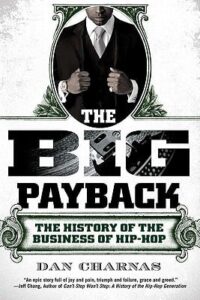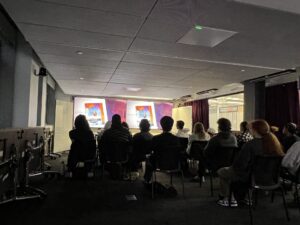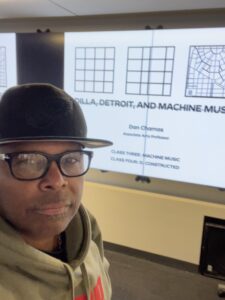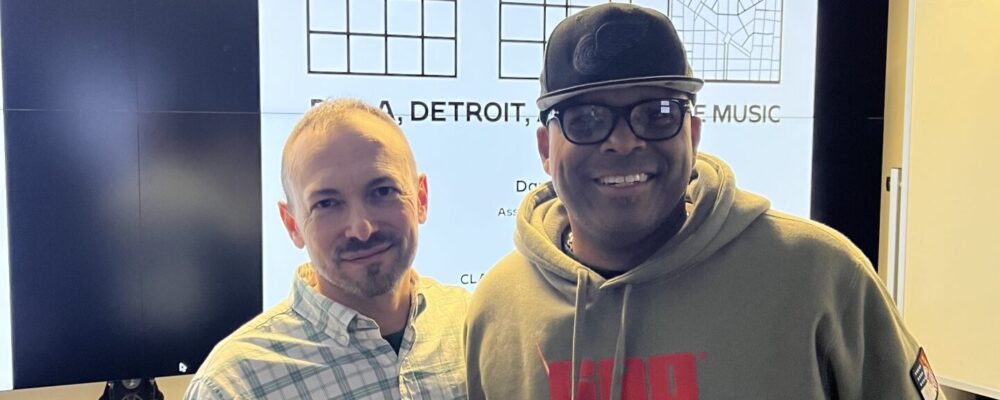Dan Charnas is a bestselling author, professor, award-winning music and journalist, and producer of records and television. Charnas has left an indelible mark on the world of music and culture and Hip-Hop through his insightful books, “Dilla Time” and “The Big Payback.” As a writer, journalist, and educator, Charnas has skillfully navigated the intricacies of the music industry and its profound impact on society.
“J Dilla: Timeless Beats, Rhymes, and Life,” commonly known as “Dilla Time,” is a testament to Charnas’s dedication to preserving the legacy of the legendary hip-hop producer, James Dewitt Yancey, affectionately known as “Jay Dee,” “J Dilla,” or simply “Dilla.”. Released in 2022, this book delves deep into the life and artistry of J Dilla, whose influential beats and innovative production techniques continue to shape the hip-hop landscape even after his untimely passing.
Charnas takes readers on a journey through Dilla’s creative process, offering a glimpse into the mind of a musical genius. “Dilla Time” is not just a biography but a celebration of an artist who forever changed the course of hip-hop music. J Dilla’s customized MPC and Moog are now housed at the African American Museum of History And Culture at DC’s Smithsonian as a testament to his Hip-hop GOAT status.
 In “The Big Payback: The History of the Business of Hip-Hop,” Dan Charnas explores the complex and multifaceted evolution of the hip-hop industry. First published in 2010, this comprehensive tome unravels the intricate web of deals, power struggles, and cultural shifts that have shaped hip-hop into the global phenomenon it is today. Charnas’s meticulous research and firsthand interviews with industry insiders provide a unique perspective on the business side of music that often remains hidden from the spotlight. “The Big Payback” is not just a historical account; it’s a critical analysis of how hip-hop became a powerful force in music and beyond.
In “The Big Payback: The History of the Business of Hip-Hop,” Dan Charnas explores the complex and multifaceted evolution of the hip-hop industry. First published in 2010, this comprehensive tome unravels the intricate web of deals, power struggles, and cultural shifts that have shaped hip-hop into the global phenomenon it is today. Charnas’s meticulous research and firsthand interviews with industry insiders provide a unique perspective on the business side of music that often remains hidden from the spotlight. “The Big Payback” is not just a historical account; it’s a critical analysis of how hip-hop became a powerful force in music and beyond.
Beyond his books, Dan Charnas’s work as an educator at NYU’s Clive Davis Institute of Recorded Music has further solidified his role as a thought leader in the music industry. His teachings draw from his vast knowledge and experience, enriching the minds of the next generation of music professionals.
Dan Charnas’s “Dilla Time” and “The Big Payback” offer invaluable insights into the world of hip-hop, from the creative genius of J Dilla to the intricate mechanics of the music industry. Charnas’s passion for music and culture shines through his writing, making these books essential reads for anyone interested in the transformative power of music and its impact on society.
Dilla, Detroit, and Machine Music At The Clive Davis Institute
 Adding to his impressive body of work, Charnas currently teaches a captivating course at the Clive Davis Institute at NYU called, “Dilla, Detroit, and Machine Music.” This 14-week journey uses multimedia to delve into the remarkable career, profound impact, and the electronic tools used to forge the enduring legacy of the music producer and composer, J Dilla.
Adding to his impressive body of work, Charnas currently teaches a captivating course at the Clive Davis Institute at NYU called, “Dilla, Detroit, and Machine Music.” This 14-week journey uses multimedia to delve into the remarkable career, profound impact, and the electronic tools used to forge the enduring legacy of the music producer and composer, J Dilla.
Dilla’s career may have been relatively short, spanning just over a decade before his untimely passing in 2006, but the influence he wielded during that time was nothing short of transformative. Through his innovative beats and unique compositions that showcased his track-looping genius, he reshaped the very fabric of popular music, leaving an indelible mark on hip-hop, Jazz, and Funk. His work literally spawned the genres; Nu Soul, and Li-Fi Hip-hop. His artistic vision, marked by a unique conception of musical time, continues to resonate with musicians across genres, from electronic to traditional.
 Charnas’s course offers students a profound exploration of Dilla’s life and work. Through a comprehensive curriculum, students gain a deep understanding of Dilla’s musical innovations and how they’ve inspired subsequent generations. It’s not just a history lesson; it’s an invitation to dissect the essence of musical creativity and the profound impact one artist can have on an entire industry.
Charnas’s course offers students a profound exploration of Dilla’s life and work. Through a comprehensive curriculum, students gain a deep understanding of Dilla’s musical innovations and how they’ve inspired subsequent generations. It’s not just a history lesson; it’s an invitation to dissect the essence of musical creativity and the profound impact one artist can have on an entire industry.
In the course “Dilla, Detroit, and Machine Music,” students embark on a sonic journey that extends beyond the classroom, challenging students to follow his journey and explore the dynamic analog and digital tools that played a pivotal role in shaping Dilla’s artistry. The course delves into the intricate rhythmic and compositional ideas that define Dilla’s music, offering students the tools to appreciate and even reinterpret his contributions.
I was invited to screen our film “God Said Give ‘Em Drum Machines” for his students. The student group was an interdisciplinary group of both aspiring musicians and students studying the business side of the music industry. As a testament to Professor Charnas’s innovative teaching, in our discussion, the students shared numerous insights that they learned from the film. As in most screenings, more than half of the students in the screening did not know that Techno’s origins can be traced to teens in Detroit in the 80’s.
In our Q&A discussion, we drew parallels between factors that influenced the development of both art forms like Techno’s teenaged drum machine and synthesizer programming creators and Dilla’s mastery of drum machine programming as a teen. We also discussed how robots took the jobs of the parents of Detroit teens causing Detroit’s economic upheaval while teens embraced robotic-sounding music and taught themselves how to program drum machines and sequencers seemingly to avoid the same kind of robotic replacement. In our discussion, we discussed parallels between these art forms that both employed synthesizers, drum machines, and digital tools like the MPC 3000, and Roland TR-808 among other electronic tools, in similar groundbreaking ways. We also discussed the teen party clubs and DJ crews that fed the thriving dance music-obsessed party scene in Detroit.
Our film speaks to numerous factors that clearly influenced Dilla’s unique style of hip hop, from radio DJs like “The Electrifying Mojo” who introduced the first techno tracks to Detroit in the 80s DJs like The Wizard (Jeff Mills), who mashed up Techno tracks and pitched up hip-hop and later, into the 90s, by DJ’ like Derrick May who’s afterschool “MayDay Mix” and weekend late-night party mix shows like the “TP in The DMZ” mix show by Terrence Parker. He was influenced to utilize and master drum machines sequencers and other types of machine music by this among other factors as a teen. In addition, artists in J Dilla’s circle like Amp Fiddler, who mentored him and taught him to program the MPC 3000, Dez Andrez (DJ Dez) the DJ for his group Slum Village, and Wajeed (Platinum Pied Pipers) whose label has released his music, ignore stigmas and create Hip-hop House and Techno tracks. Techno and House from Detroit has spread globally along with Dilla’s hip-hop influence. Detroit musicians have never been constrained by the artificial boundaries of genre.
Dan Charnas’s dedication to preserving the legacy of artists like J. Dilla and his ability to convey the essence of their work make him an invaluable asset to the world of music education. Through this course, he continues to inspire a new generation of musicians to explore the uncharted territories of music, time, and creativity, just as Dilla did during his too-brief but profoundly influential career.
I count Dan as a friend and fellow journalist. We have been on our musical journeys to document Detroit history in parallel over the past few years, so we have shared information and Dan has invited me to speak to students in his course on J Dilla several times. Dan personally introduced me to J Dilla’s mother, Ma Dukes one time when she visited NYC he also referenced me in his book “Dilla Time”.

